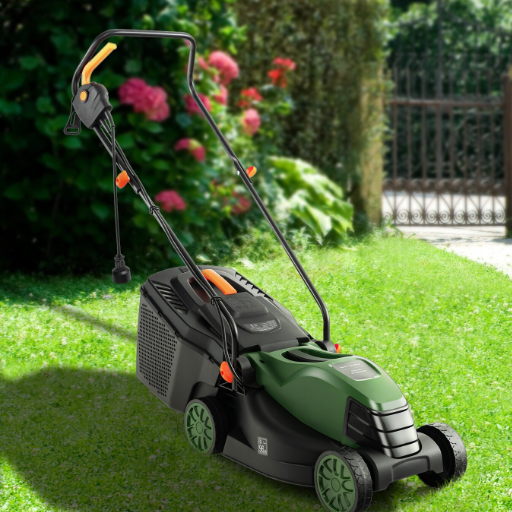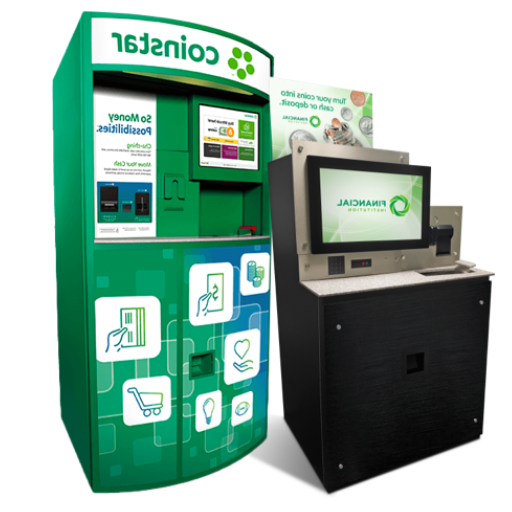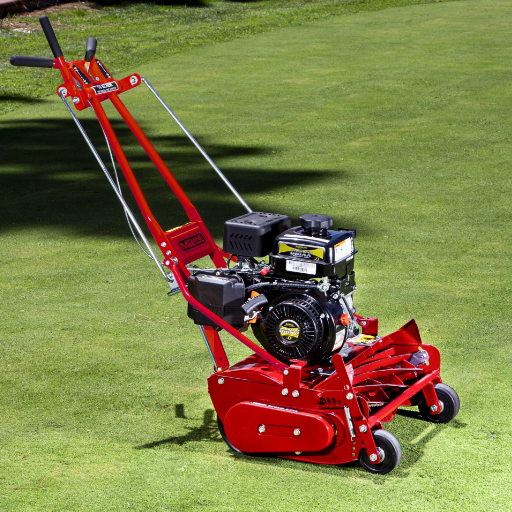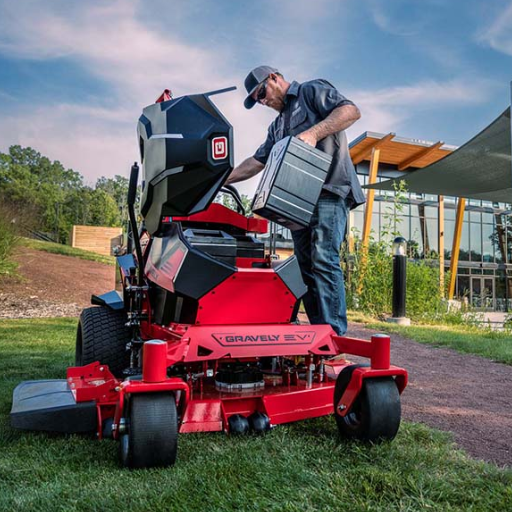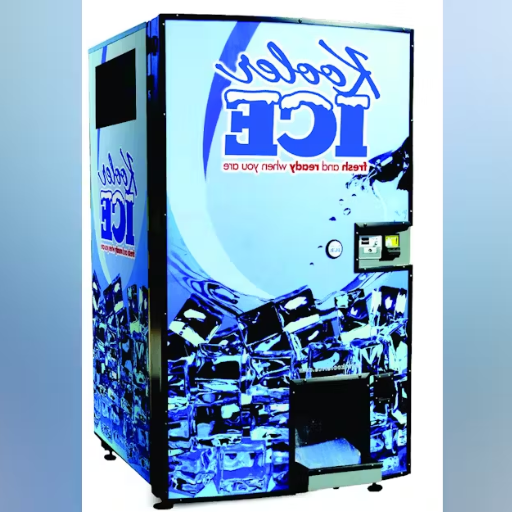Choosing the right packaging machinery is essential for businesses wishing to enhance operational efficiency, cut costs, and ensure quality control to product preservation. This article will present a strategy to help you determine your specific packaging needs, analyze the technologies available, and regard other essential aspects like production scale, budget, and industry benchmarks. Doing so guarantees that the equipment chosen is cost-effective while meeting current operational needs and future expansion plans, enhancing and sustaining efficiency within your packaging operations.
What factors should I consider when choosing packaging equipment?
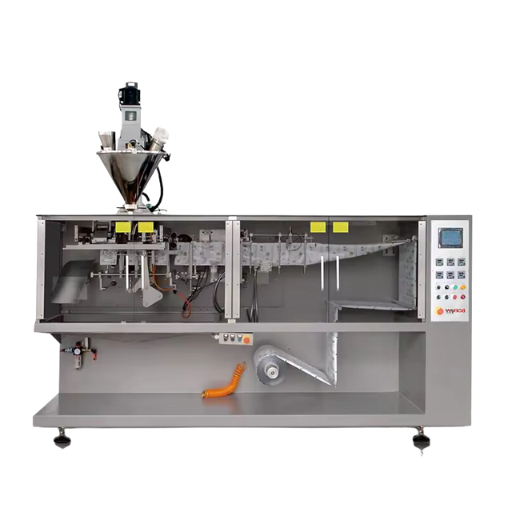
When choosing a packaging machine, it is important to note the level of production, the nature and specifics of the products being manufactured, and the compatibility of the products with the packaging materials. To ensure quality, analyze the equipment’s ability to scale to future demand and its compliance with standards and regulations. Other factors to consider include operational efficiency, maintenance simplicity, and total cost of ownership in terms of initial and long-term active expenses.
How does the volume of production impact the criteria for choosing packaging equipment?
The production volume impacts the criteria for choosing the packaging equipment because it is directly proportional to the value and type of packaging equipment needed. Manual and semi-automated machines are suitable for low production levels because they are inexpensive and much simpler to operate. On the other hand, fully automated systems are required for higher production levels to increase efficiency and meet production quotas. Technical parameters include machine cycle speed (e.g., packages per minute), throughput capacity, and system uptime. All these factors influence the expected output of the equipment. Finally, the equipment must have an acceptable level of scalability, as significant changes may not be proportional to productivity.
What role does product type play in choosing the right machinery?
The product type determines a lot for any specific piece of packaging machinery. Every product consideres a set of features, so the equipment must meet its requirements. Attributes like size, shape, texture, and fragility dictate the most suitable machinery to ensure the product as intact as possible. For example, liquid products require systems for precise filling to avoid spillage, while granular products need accurate weighing and dispensing. Technical parameters to analyze include:
- Filling Accuracy: Achieving the required product doses, especially for pharmaceuticals and liquids, to ensure compliance with regulations.
- Conveyor Compatibility: The system’s capacity to pass the product through must match its size and weight.
- Material Handling Capabilities: The machinery’s ability to cater for particular sensitivities of the product like fragile goods or sanitary needs of other items.
- Customization Options: The ability to modify the machinery for special types of packaging like multi-shaped containers or multi-layered packs.
Considering these parameters, machines can be tailored to best suit the specific product’s characteristics and operational production targets.
What is the importance of automation in modern packaging systems?
Automation has become fundamental to modern practices within packaging systems. Automated technologies improve the usage of operational funds and overall productivity while ensuring uniformity in the quality of products offered to customers. When Automated Technologies are employed, production speed increases considerably, mistakes made by people are eliminated, and even the most difficult packaging demands can be fulfilled seamlessly. In addition, automation permits scalability which aids manufacturers in catering to volatile market conditions while maintaining a high level of precision and dependability. This input is crucial for achieving productivity, streamlined workflows, and economic growth in the competitive business landscapes.
Which packaging machines are best for small to medium-sized businesses?

Choosing the appropriate packaging machines for small to mid-sized businesses often relies on their budget and production needs. For those that need moderate throughput with some level of flexibility, entry-level automatic or semi-automatic machines work great. Flow wrappers work best for packaging baked goods or small merchandise, while tabletop vacuum sealers are affordable options for food preservation. Furthermore, due to their compact design and versatility, businesses that deal with granular or powdered goods are best served with vertical form-fill-seal (VFFS) machines. These options make sense and work well within the scope of small to mid-level packaging operations as they are affordable, functional, and scalable.
What are the benefits of semi-automatic packaging equipment?
Semi-automatic packaging equipment guarantees efficiency without losing control over the packaging process as it combines manual work and automation. These machines save money by eliminating labor and speeding up production, and they also save capital by not needing a hefty investment like fully automated systems. Additionally, semi-automatic packaging equipment is adaptable, as it can work with multiple formats and materials. Similarly, maintenance is easy and does not require extensive training unlike other more complicated options. There are no downsides to semi-automatic packaging equipment, making them the best option for scaling business spender.
In what ways would bagging equipment help optimize efficiency for SMEs?
SMEs work more efficiently with bagging equipment as it automates packaging, cutting down on pre-distribution labor hours. This system handles the filling, sealing, and weighing of bags which significantly improves the quality and precision of the packaging. Because these systems reduce the likelihood of human errors and waste, operational costs are streamlined, and productivity increases. Furthermore, modern bagging systems are versatile, allowing SMEs to meet various product and bag size requirements while expanding operational throughput and scalability.
Can I find versatile packaging that will fit many of my products?
Absolutely, one of the packaging systems available accommodates diverse product lines, including liquids, powders, and solids. These systems have modular parts and adjustable settings that allow manufacturers to accommodate different product dimensions, weights, and materials. Multi-functional systems that can fill, seal, and label products in one streamlined process save companies a lot of time and money. With such flexible systems, maintaining high levels of quality and consistency becomes easier even with multiple product lines.
What are the latest trends in pharmaceutical packaging equipment?
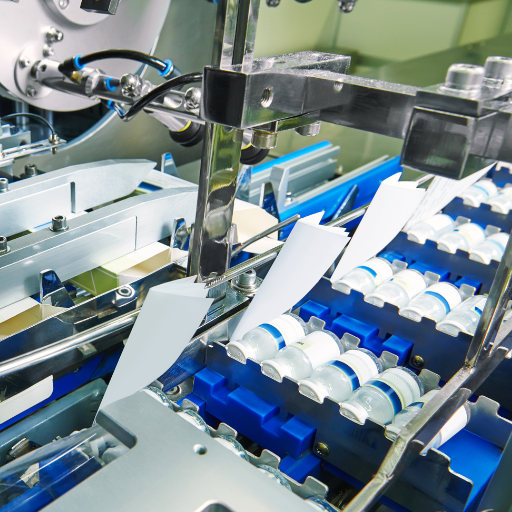
The most recent developments with regards to pharmaceutical packaging equipment and machinery focus on sustainability, automation, and product security. Companies are adopting new materials and technologies that are aimed toward improving the ecological footprint of the business. Moreover, business processes are being streamlined with the help of automation, which includes the mounting use of Artificial Intelligence and IoT. Furthermore, anti-counterfeiting techniques such as serialized barcodes and tamper-proofing are being more widely adopted to protect a product’s originality and meet strict regulations. It is projected that these innovations will further increase the pharmaceutical packaging industry’s efficiency, security, and eco-friendliness.
In what ways do robotic systems improve the tasks involved in packaging pharmaceutical products?
Robotic systems improve the tasks involved in packaging pharmaceutical products by significantly increasing efficiency, accuracy, and variability in processes. The systems can perform repetitive activities with a set level of precision that mitigates the chances of human error on tasks such as packaging. These advanced systems have vision systems that allow them to sort, label, and even check for product defects. Robots are designed to multi-task as well. They are capable of switching between various formats and packaging processes on short notice, increasing production speed. Their application in packaging lines increases the possibility of expansion and meeting the industry’s stringent requirements, which is why they are vital in modern pharmaceutical production.
Which machinery supports track and trace processes of packaging?
From my perspective, a packaging machine that complies with industry regulations will include automation systems based on precision, productivity, and responsibility. Track and Trace requirements extend to counterfeiting and product traceability because serialization machines are essential process tools. Blister packaging systems are also of utmost importance because of the sealing mechanisms that provide tamper evidence and product integrity inductive for regulatory standards. Furthermore, cartons and labelers utilize complete positioning inspection systems to ensure the labels are correct and compliant with those defined by the pharmaceutical inspection guidelines. These machines are designed to conform to GMP or their validation provisions following international requirements.
How is unique pharmaceutical needs provided with specialized equipment?
Unique pharmaceutical needs are addressed with specialized equipment through a combination of quality control, manufacturing, and computers’ regulatory activities. Take, for instance, fluid bed dryers and granulators that optimize the production of good-quality granules for tablets and capsules. The same case applies to Coating machines, which help to reduce gaps between two doses of a pharmaceutical product accurately and protect active ingredients from degradation. Advanced Aseptic Fillers guarantee the minimum level of contamination risk during sterile processing for injectables. As can be appreciated, these technologies are intended to make innovation possible while operating under the demanding conditions of the pharmaceutical industry.
How do I choose the right pouch packaging equipment for my products?
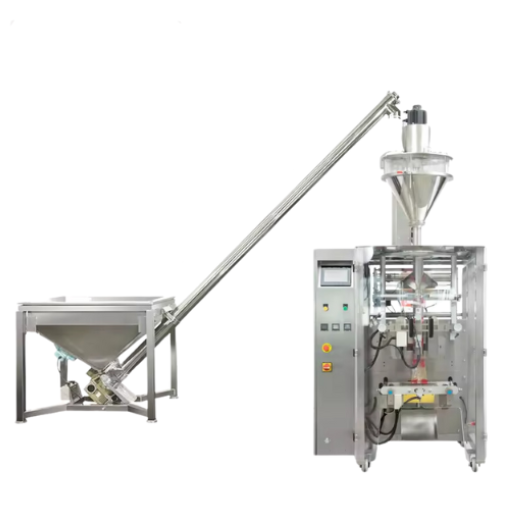
When selecting the right equipment pouch packaging, you need to understand the unique aspects of your pouch, such as its size, material, and intended packaging style. In addition, identify if the equipment is appropriate for the volume of production and the amount of automation needed to achieve operational effectiveness. Think about what kind of seals and closures are necessary for your product and make sure the pouch packaging machines have these capabilities. Check if the equipment is within your budget if any changes will be required in the future, so that new production does not affect any existing production requirements. Packaging may rely heavily on various innovations in the industry, which is why these innovations need to be compliant with industry regulations as well as standards for long-lasting effectiveness.
What are the distinctions between horizontal and vertical form fill seal machines?
The difference between horizontal and vertical form fill seal FFS machines is in their orientation, as the name suggests, and their use. Horizontal form fill seal FFS machines are set up to operate on a horizontal plan. This makes them ideal for baked goods, medical pouches, and other stable products. These production machines are designed with horizontal feeders and can use high speed for accuracy when sealing and shaping materials.
In contrast, Vertical FFS machines work on a vertical axis, and are suited for packaging granular, powder, or even liquid snacks, grains, and condiments. They can be freely set for fine, free-flowing materials, allowing for natural feeding through gravity. They often come with volumetric fillers or multi-head weighers for precise dosing and adjustable bag length.
As for the technical parameters, speed capabilities are included. Horizontal machines can offer hundreds of cycles per minute depending on the complexity and type of product, whereas Vertical machines can achieve 80-200 cycles per minute for typical powdered or granulated items. Both systems must consider the sealing methods for the package, such as heat sealing or ultrasonic sealing, along with product preservation. The decision is made based on the production environment and the product’s specific needs.
How do I select the right style and size of the pouch which fits my product?
The ideal pouch style and size should consider all the product factors like it’s weight, volume, and type. The type also determines whether the pouch can be a flat, gusset style, or stand up pouches. Also, consider the expected shelf life and storage conditions as it helps determine the material type and barrier properties needed like moisture, light, or oxygen resistance. Resealable zippers, tear notches, and locks serve to increase user-friendliness but should also fit the nature of the product. Finally, there are design restrictions which need to be considered. Pouches should promote the brand and serve a practical need for an ample labeling area for the contents inside.
Which Pouch Packaging Systems Best Suit I Need for My Business
First, the equipment should ensure better output at a higher speed. Regarding pouch filling capabilities, you should check if filling weights are accurate and if sealing quality is consistent with maintaining product quality. For better packaging requirements, equipment should be adjustable to match the needs of flat-bottom, gusseted, or stand-up pouches.
Important technical specifications, such as pouch filling speed per minute and sealing capabilities, like the range of heat sealing temperatures and pressure levels suitable for the pouch material, should also be considered. In addition, automation functionalities, such as programmable controls, fast changeover features, and integrated native quality inspection innovations, can increase production efficiency and cut down on idle time. Maximizing operational lifespan means opting for machines designed with modular components so that accessibility for maintenance and cleaning is easy.
When selecting the right equipment pouch packaging, you need to understand the unique aspects of your pouch, such as its size, material, and intended packaging style. In addition, identify if the equipment is appropriate for the production volume and the amount of automation needed to achieve operational effectiveness. Think about what kind of seals and closures are necessary for your product and make sure the pouch packaging machines have these capabilities. Check if the equipment is within your budget and if any changes will be required in the future so that new production does not affect any existing production requirements. Packaging may rely heavily on various innovations in the industry, which is why these innovations need to be compliant with industry regulations and standards for long-lasting effectiveness.
What are the distinctions between horizontal and vertical form fill seal machines?
The difference between horizontal and vertical form fill seal FFS machines is in their orientation, as the name suggests, and their use. Horizontal form fill seal FFS machines are set up to operate on a horizontal plan. This makes them ideal for baked goods, medical pouches, and other stable products. These production machines are designed with horizontal feeders and can use high speed for accuracy when sealing and shaping materials.
In contrast, Vertical FFS machines work on a vertical axis, and are suited for packaging granular, powder, or even liquid snacks, grains, and condiments. They can be freely set for fine, free-flowing materials, allowing for natural feeding through gravity. They often come with volumetric fillers or multi-head weighers for precise dosing and adjustable bag length.
As for the technical parameters, speed capabilities are included. Horizontal machines can offer hundreds of cycles per minute depending on the complexity and type of product, whereas Vertical machines can achieve 80-200 cycles per minute for typical powdered or granulated items. Both systems must consider the sealing methods for the package, such as heat sealing or ultrasonic sealing, along with product preservation. The decision is made based on the production environment and the product’s specific needs.
How do I select the right style and size of the pouch which fits my product?
The ideal pouch style and size should consider all the product factors like it’s weight, volume, and type. The type also determines whether the pouch can be a flat, gusset style, or stand up pouches. Also, consider the expected shelf life and storage conditions as they help determine the material type and barrier properties needed, such as moisture, light, or oxygen resistance. Resealable zippers, tear notches, and locks serve to increase user-friendliness but should also fit the nature of the product. Finally, there are design restrictions which need to be considered. Pouches should promote the brand and serve a practical need for an ample labeling area for the contents inside.
Which Pouch Packaging Systems Best Suit I Need for My Business
First, the equipment should ensure better output at a higher speed. Regarding pouch filling capabilities, you should check if filling weights are accurate and if sealing quality is consistent with product quality. For better packaging requirements, equipment should be adjustable to match the needs of flat-bottom, gusseted, or stand-up pouches.
Important technical specifications, such as pouch filling speed per minute and sealing capabilities, like the range of heat sealing temperatures and pressure levels suitable for the pouch material, should also be considered. In addition, automation functionalities, such as programmable controls, fast changeover features, and integrated native quality inspection innovations, can increase production efficiency and cut down on idle time. Maximizing operational lifespan means opting for machines designed with modular components so accessibility for maintenance and cleaning is easy.
What packaging equipment solutions are available for personal care products?

Different types of packaging equipment for personal care products are developed for specific product categories such as liquid, cream, powder, and gel. Liquid and piston fillers are the right machines for dispensing viscous products because they waste very little and are very precise. Squeeze tubes like toothpaste or lotion are best packed using tube filling and sealing machines because they fill and seal in a single step and provide airtight seals. Single-use or travel-sized packages are best served with flexible pouch filling systems that offer heat seals or resealable closures. Adjustable auger filling machines ensure even weight distribution for powders and dry products. Automatic labelers and cartoners provide added branding and product advertising without taking away from storage and product distribution. These systems have advanced automation and easily meet industry standards and simplify production processes.
In what ways do these machines fulfill several personal care formulations?
Filling machines in the cosmetic industry fill the gaps in viscosity, texture and packaging by using advanced engineering. Volumetric and gravity filling systems for liquid formulations, such as shampoos and liquid body washes, ensure accurate dispensing within the limits of ±0.5% of the intended target volume. Piston filling and servo driven pump filling machines with adjustable dispensing settings work well for thick creams and gels. Auger fillers are efficient for powdered products like dry shampoo and exfoliating powders because they incorporate servo control and agitator blades to maintain constant feed rates.
Exact fill volume range, viscosity handling capacity of 1 to over 100,000 cP and compatibility with various containers like bottles, jars, and pouches are the key technical parameters. Nozzles with anti-drip features, which automatically switch the filler off after a dosage is dispensed, are important for keeping hygiene and reducing product wastage. With adjustable filling speeds and modular features, these fillers are designed to achieve certain set production volumes, while meeting the industry’s requirements in formulation preservation and product quality.
What systems are the most efficient for the labeling of products in regards to aspects like beauty packaging?
The most efficient systems of labeling beauty and personal care packaging involve sophisticated labeling options that help manage precision, effectiveness, and flexibility. Some of the systems in the beauty industry include pressure-sensitive labeling systems, which are popular because they work well for items of different shapes and materials. These systems make it possible to apply the label accurately without causing damage to the sensitive parts of the packaging. In fast production processes, rotary labeling machines enable continuous labeling, quick change of products, and fast blanket application. But there are also systems for covering the whole shank of complex containers, which are shrink sleeve labeling systems. Unlike other types of covers, shrink covers provide labels with 360 degrees of eye-catching surface to work with. Sophisticated systems sometimes incorporate automated machines with vision systems for quality assurance or correct label positioning for accurate tag placement. This is done to guarantee compliance and accuracy.
In what ways can cartoning equipment improve the presentation of personal care products?
Personal care product presentation is improved with aesthetically appealing cartons that provide workmanship packaging. Packing the products in the carton prevents them from getting damaged while also preserving its professional look. High-end cartoning machines are able to execute accurate folding, sealing, and printing of the carton which allows them to add brand names, important information, or fancy designs. Moreover, these systems can use multiple types of cartons to fit different forms and sizes of products, making sure these products are all visually uniform for improved client satisfaction.
How can I optimize my packaging line for maximum efficiency?

To enhance the effectiveness of your packaging line, the first step is to use tools that will reduce the amount of hands-on work needed from personnel while simultaneously increasing output. Ensure you perform routine maintenance and checks on the machinery to avoid issues that might disrupt productivity and perform as expected. Remove obstacles, like outdated machinery and poorly organized work processes, to help improve work speed to bolster workflows. Use advanced equipment that supports different packaging types to reduce the time needed to switch gears. Also, analytics tools can be used to track key indicators to discover and address inefficiencies while optimizing processes—further, onboard employees on how to implement best practices and maintenance policies for continuous productivity gains.
In what ways do conveyors improve efficiency during packaging?
Conveyors reduce the amount of time and cost used in the packaging workflow as they make it easier for products to move from one phase of production to the next quickly and accurately. The machine reduces manual labor, thus lowering costs and the chances of making errors, improving the overall workflow. They maintain a certain speed to help eliminate bottlenecks and ensure a continuous supply of materials, which in turn enhances the productivity and output of the entire operation. Also, modern conveyors can designed to meet particular business requirements, like different product sizes or automated sorting, which contributes to effectiveness.
Are Packagers and Sealers Able To Improve Productivity For Businesses?
Packagers and sealers can improve productivity for companies by using these machines for packing and sealing because these machines reduce the need for people to work manually, further reducing operational downtime. These machines pack products accurately, thus significantly reducing errors and waste of resources. Besides improving productivity, these case packers enhance the flow of work by processing large volumes of items quickly while providing a steady output rate. More excellent process reliability is achieved and system throughput is increased by combining these systems with current processes.
Package Order Systems and Their Integrated Benefits
The initial information provided shows that integrated systems for these package order systems have improved efficiency within businesses. Such benefits include lowering overall expenses and improving operational efficiency. Automating these systems reduces material waste while ensuring quality and improving speed. These systems are highly versatile as they can be used to meet a business’s varying scales. Furthermore, they aid in better inventory management and improve a company’s supply chain processes.
Reference sources
Frequently Asked Questions (FAQs)
Q: What are the most common types of packaging equipment for general packaging needs?
A: Common types of packaging equipment include stretch wrappers, shrink wrap machines, case sealers, baggers, tray formers, and palletizers. The best equipment for your business depends on your specific products and packaging requirements.
Q: How do I choose the right shrink wrap equipment for my products?
A: When selecting shrink wrap equipment, consider factors such as product size and shape, production volume, and desired packaging appearance. Options range from manual L-sealers to fully automated shrink bundling systems. Consult with a packaging equipment supplier to determine the most suitable solution for your needs.
Q: What are the benefits of using tray packaging equipment in my manufacturing process?
A: Tray packaging equipment, such as tray formers, offers several advantages including increased efficiency, consistent packaging quality, and reduced labor costs. These machines can handle various product sizes and are ideal for creating retail-ready packaging or organizing multiple items for shipment.
Q: How can coding equipment improve my packaging line?
A: Coding equipment is essential for adding important information like expiration dates, batch numbers, and barcodes to your packaging. It enhances traceability, helps with inventory management, and ensures compliance with regulatory requirements. Modern coding systems can integrate seamlessly with other packaging machinery for a more efficient production line.
Q: What factors should I consider when choosing a palletizer for my business?
A: When selecting a palletizer, consider your production speed, pallet patterns, product types, and available floor space. Robotic palletizers offer flexibility for handling various product sizes, while conventional palletizers are suitable for high-speed, consistent product lines. Also, consider the integration with other packaging equipment like stretch wrappers for a complete packaging solution.
Q: How do I determine if I need a liquid filling machine for my packaging line?
A: If your business involves packaging liquids, semi-liquids, or viscous products, a liquid filling machine can significantly improve efficiency and accuracy. Consider factors such as product viscosity, fill volume, container type, and production speed when choosing between gravity fillers, pump fillers, or inline filling systems.
Q: What are the advantages of using bundling equipment in my packaging process?
A: Bundling equipment, including shrink bundlers and banding machines, offers benefits such as improved product presentation, secure multi-pack creation, and reduced packaging material usage. These machines are ideal for grouping multiple items together, creating promotional packs, or preparing products for retail display.
Q: How can I ensure I’m choosing world-class packaging equipment for my business?
A: To select world-class packaging equipment, research reputable packaging equipment companies and suppliers. Look for machines that offer reliability, efficiency, and compatibility with your existing production line. Consider factors such as after-sales support, spare parts availability, and the supplier’s experience in your industry. Visiting trade shows or requesting equipment demonstrations can also help you make an informed decision.



